Sao Paulo Metro Information
The São Paulo Metro system, inaugurated on 24 April 1968, is the largest in Brazil and the main rapid transit system of São Paulo. It is the most popular means of public transport in São Paulo. It is also the third largest in Latin America and the second largest metro system in South America. The system is divided into five lines and extends over 75.5 km. According to 2013 statistics, the system had an average of 4.6 million passengers per weekday and provided more than 888.6 million trips. The metro system is integrated with the city’s heavy rail system. The metro system is considered one of the cleanest in the world and was voted Best Metro in the Americas at the 2010 Metro Rail Industry Conference. The system is also linked to the São Paulo Metropolitan Trains Company, also known as CPTM, which also serves other municipalities around São Paulo and freight trains. The metro runs within the city limits and does not cover the entire metropolitan area. It carries about 4,600,000 passengers per day. Both the metro and CPTM are state-owned companies. Expansion plans are underway for the metro and CPTM heavy rail systems, which are expected to carry an average of 9.3 million passengers per weekday by 2018.
The metro is funded by the state government of São Paulo. The lines are considered average in terms of service. However, some downtown stations and Line 4 have better infrastructure as they are expected to be heavily used.
Sao Paulo Metro Map
Map of Sao Paulo Metro showing different lines and stations. Click on the map to enlarge it or download the Sao Paulo Metro map in PDF format.
Brazil’s Metro Systems: The São Paulo Metro
São Paulo, a massive city often referred to as San Pablo by its locals, holds the title of the largest city in South America and one of the largest in the world. With a population of over 21 million in its metropolitan area, São Paulo is the cultural and economic hub of the Portuguese-speaking world, and its global aspirations are evident.
Similar in size to other global cities such as New York, Tokyo and Mexico City, São Paulo’s sprawling landscape required a robust transport infrastructure to meet the daily commuting needs of its millions of residents. This need led to the creation of the São Paulo Metro in the 1960s.
The original plan for the metro project called for four lines covering a distance of 70 kilometres (43.5 miles), to be operational by 1978. However, the project was not completed until the 80s and 90s.
Over time, the network has seen significant expansion beyond the original four lines, with the fifth and sixth lines added just before the new millennium. Currently, the metro system spans 80 kilometres (49.7 miles) and carries approximately 4.6 million passengers per day.
The Metro Lines
The São Paulo Metro consists of six lines, five of which are underground and one of which is a monorail. These lines serve the four cardinal points of the city and integrate its 91 stations with other surface transport such as buses and taxis.
Line 1 (Blue)
The Blue Line, which runs from the north to the south of the city, marked the completion of the first section of the São Paulo Metro. Begun in the late 1960s and completed in the early 1970s, it was Brazil’s first metro system.
It covers 20.4 kilometres (12.7 miles) and has 23 stations, stretching from the Tucuruvi district in the northern zone to Jabaquara, located in the Rua dos Jequitibás sector in the south.
Line 2 (Green)
The Green Line, or Paulista Line, crosses Paulista Avenue, the financial heart of the city. The line is 14.7 kilometres (9 miles) long and has 14 stations.
It runs from the Alto de Pinheiros district in the west of the city to the Vila Prudente sector in the east. Construction began in 1987 and the first line opened in 1991. Subsequent station additions led to a gradual extension of the line. Despite being called Line 2, it was the third metro line to be built in São Paulo.
Line 3 (Red)
The Red Line, formerly called the East-West Line, is 22 kilometres long and has 18 stations. It has the distinction of being the busiest line in the São Paulo subway system.
Inaugurated in 1979, it was the second line built, despite its nomenclature as “Line 3”. It connects the Barra Funda sector in the west of the city with the Itaquera district in the east.
Line 4 (Yellow)
The Yellow Line spans 12.8 kilometres (8 miles), divided into 11 stations, and serves residents from the Da Luz neighbourhood to the Rua Pirajussara area. Formerly known as the Southeast-Southwest Line, construction began on 25 May 2010 and was fully operational by 15 November 2014.
Although it is smaller than other routes, it plays an important role for the city’s residents as it passes through the main financial centres. This results in high daily ridership.
Line 5 (Lilac)
Construction of the Lilac Line, or Line 5, began earlier than Line 4, starting in 2001 and officially opening on 20 October 2002.
With 10 stations spread over 18.5 kilometres (11.5 miles), the line extends from the Capão Redondo district to the Santo Amaro sector in the south-central region of the city.
Since its inauguration, the line has grown from six to ten stations by 2017. A further seven stations are planned and should be operational by 2019.
Line 15 (Silver)
The Silver Line is the newest and shortest line in the São Paulo Metro, inaugurated in early 2014, with two operational stations spanning 2.9 kilometres (1.8 miles). The line is still under construction and is expected to be completed by 2020. Unlike other lines, it features a unique monorail service that currently serves the Vila Prudente and São Lucas districts.
Interconnections
São Paulo’s metro system is closely linked to several bus lines that serve areas beyond the reach of the trains. At the same time, it connects passengers to a railway system that links the suburbs to the city centre. Below are several stations with specific connections, indicated by their respective lines.
Line 1 (Blue)
- Luz Station: This station interconnects primarily with São Paulo’s Line 4, the Yellow Line, and offers transfers to the 7 and 11 metropolitan railway lines.
- Sé Station: This station only provides a connection to Line 3, the Red Line of the São Paulo Metro.
- Paraíso Station: This station allows a transfer to Line 2, the Green Line.
- Ana Rosa Station: Similar to Paraíso Station, this one also has a connection to Line 2, the Green Line.
Line 2 (Green)
- Consolação Station: This station interconnects with the metro’s Line 4, the Yellow Line.
- Paraíso Station: This station provides a direct link to Line 1, the Blue Line.
- Ana Rosa Station: This station offers a transfer to Line 1, the Blue Line.
- Tamanduateí Station: This station connects directly with Line 10 of the metropolitan railway.
- Vila Prudente Station: This station only links to metro Line 15, the Silver Line.
Line 3 (Red)
- Palmeiras-Barra Funda Station: This station interconnects with Lines 7 and 8 of São Paulo’s metropolitan railway.
- República Station: This station offers a transfer to Line 4, the Yellow Line in the metro system.
- Sé Station: This station connects solely to Line 1, the Blue Line.
- Brás Station: This station connects directly with Lines 10, 11, and 12 on the metropolitan railway.
- Tatuapé Station: This station has two connections: one to Line 11 and another to Line 12 on the railway.
- Corinthians-Itaquera Station: This station’s only link is with Line 11 of the city’s railway.
Line 4 (Yellow)
- Luz Station: This station allows a direct transfer to Line 1, the Blue Line, and also connects to railway Lines 7 and 11.
- República Station: A transfer to Line 3, the Red Line, can be made at this station.
- Paulista Station: This station interconnects directly with the subway system’s Line 2, the Green Line.
- Pinheiros Station: São Paulo Metro passengers can transfer to Line 9 on the metropolitan railway at this station.
Line 5 (Lilac)
- Santo Amaro Station: This station only connects to Line 9 on the metropolitan railway.
- Santa Cruz Station: This station allows passengers to transfer to metro Line 1, the Blue Line.
- Chácara Klabin Station: This station interconnects with the metro system’s Line 2, the Green Line.
Line 15 (Silver)
- Vila Prudente Station: This station connects directly to Line 2, the Green Line of the subway system.
Ticketing and Fare Options
The São Paulo Metro offers a variety of ticket types and payment plans to meet the different needs of its passengers. A standard one-way ticket costs R$ 4 ($US 1.25), but various plans offer opportunities for cost savings. Here’s an overview of São Paulo Metro ticket types and payment options.
Metro Tickets
- Unitário: This is the normal metro ticket. It is available at ticket offices and vending machines at all stations and costs R$4 ($1.25 US).
- Especial Desempregado: This special ticket is for unemployed people who have been out of work for more than six months. It’s free and must be requested at a ticket office with proof of eligibility.
Single Tickets
Single tickets are personalised prepaid cards, non-transferable and exclusive to the holder. The following payment options are available:
- 24 Horas Exclusivo Trilhos: This pass offers unlimited travel on selected São Paulo Metro and Metropolitan Train lines for 24 hours and costs R$15 ($4.66).
- 24 Horas Integrado: For R$ 20 ($US 6.22), this option offers unlimited 24-hour travel on the metro, metropolitan trains and city buses.
- Mensal Exclusivo Trilhos: For R$ 194.30 ($US 60.41) per month, this plan offers 10 daily trips for 31 days on metro and metropolitan train lines.
- Mensal Integrado: For R$ 307 ($US 95.45) this plan offers 10 daily trips for 31 consecutive days on the metro, suburban trains and city buses.
- Bilhete Único Comum: At R$ 4 ($US 1.25), this ticket includes 1 metro and 3 bus rides within 2 hours of purchase and offers special rates for students.
- Estudante: For primary, secondary and university students, the fare is half of the “Bilhete Único Comum” – 2 R$ ($US 0.62). Proof of entitlement is required at the ticket office.
- Bilhete Único Especial: For senior citizens aged 65 and over, this ticket gives free access to the metro, city buses and suburban trains.
Operating Hours
With almost round-the-clock service, the São Paulo Metro operates from 4:40 a.m. to midnight, Sunday to Friday. Normal service is subject to occasional interruptions for maintenance. On Saturdays, the metro is open until 1:00 am.
Rules and Regulations
- Persons under the influence of alcohol are not permitted to enter the metro.
- Consumption of alcoholic beverages is not permitted on Metro premises.
- The carrying of firearms or potentially dangerous devices is prohibited for the safety of all passengers.
- It is forbidden to carry fireworks in the metro.
- Vandalism in metro facilities and on trains is punishable by law, with penalties ranging from fines to imprisonment.
- Oversized baggage must be approved in consultation with authorised service personnel.
- Smoking is not allowed in metro facilities and on trains.
- Selling items without authorisation on trains and in stations is prohibited.
- Misuse of emergency equipment in stations and metro vehicles is strictly forbidden.
Bicycle Accessibility
In response to evolving mobility trends, the São Paulo Metro accommodates bicycles with dedicated parking areas at various stations. Bicycle transport between stations is subject to specific time restrictions: 20:30 until closing, Monday to Friday, 14:00 until closing on Saturdays and all day on Sundays. Bicycles must be carried in the last carriage of each train and only up to four bikes are allowed at a time.
Future Developments
The São Paulo Metro is in the process of expansion, with plans to build new lines 22, 19, 16 and 23. However, these new lines do not yet have confirmed start and completion dates. The current lines have the following expansion plans
- Line 4: The Yellow Line plans to add another 3.4 kilometres (2.11 miles) with four new stops serving the Higienópolis neighbourhood and the Butantã district. The completion date has not yet been determined.
- Line 5: The Lilac Line has plans for an additional 6.6 kilometres (4.1 miles) of track to serve the Santo Amaro and Vila Mariana neighbourhoods. No start date has been set for this extension.
- Line 15: The Silver Line has plans to add 10 kilometres (6.2 miles) and 8 new stations from the district of São Lucas to the municipality of São João de Meriti.
Key Information
- Every day, the São Paulo Metro carries 4.5 million passengers, with an annual ridership of 895.6 million.
- The metro system consists of six operational lines, each of which is well integrated. In particular, Line 4, also known as the Yellow Line, is managed by a separate operator, ViaQuatro.
- Despite its reach, São Paulo’s metro has been criticised for its perceived inability to meet the transport needs of the city’s densely populated 12 million inhabitants.
- Of all the lines, Line 3, marked in red, is the most congested. It exceeds the recommended passenger density with an average of 7.4 passengers per square metre instead of the recommended 6.
Airport Connection
While there isn’t a direct metro connection to São Paulo-Guarulhos International Airport, the metro system has several connections to bus lines that serve the airport. These connections are mainly available through the Red Line (Line 3). Similar bus services offer direct routes to the airport.
This also applies to those travelling from the city centre to the airport. If you’re arriving in São Paulo, buses from the airport to the city, including those that connect to the metro network, are readily available.
Tourist Attractions
The city of São Paulo is a bustling metropolis full of attractions ranging from nightclubs, parks and restaurants to five-star hotels. The city offers many options for entertainment and leisure.
One of the notable highlights is the famous Paulista Avenue, located along Line 2 of the metro. This line serves three stations: Consolação, Trianon Masp and Brigadeiro. Spanning 2.8 kilometres (1.7 miles), the avenue is home to a number of hotels, shops and restaurants, as well as the prestigious Assis Chateaubriand São Paulo Art Museum. It’s an excellent starting point for any tour of this vibrant Brazilian city.
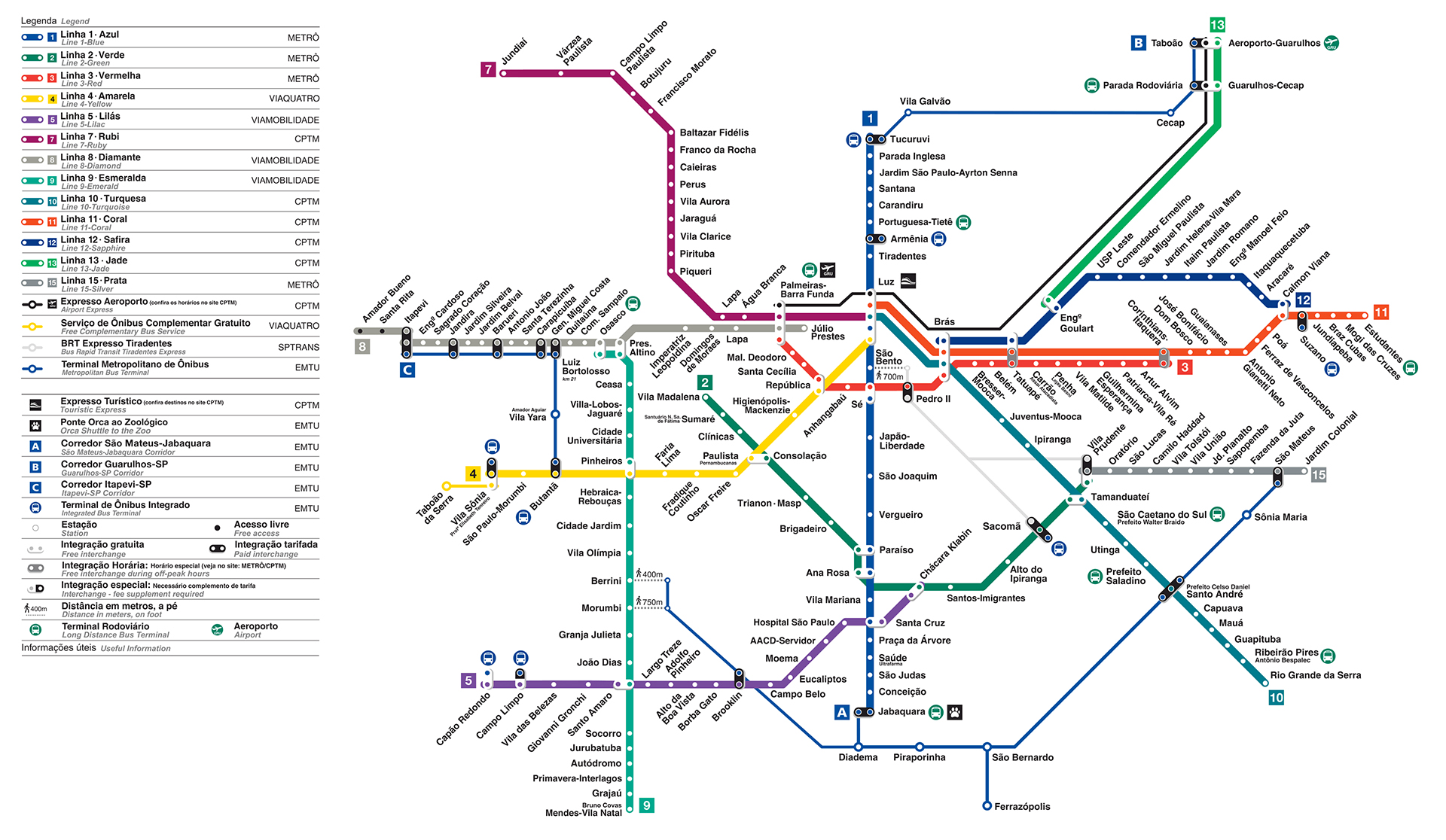
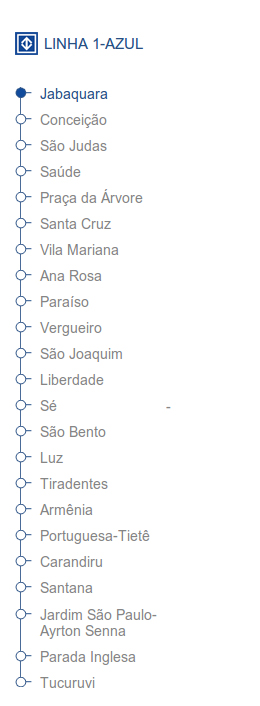
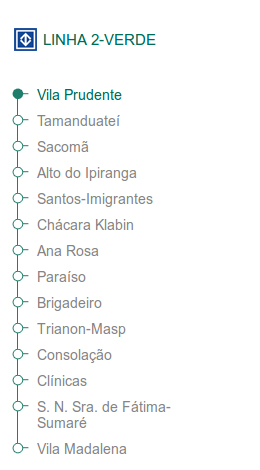
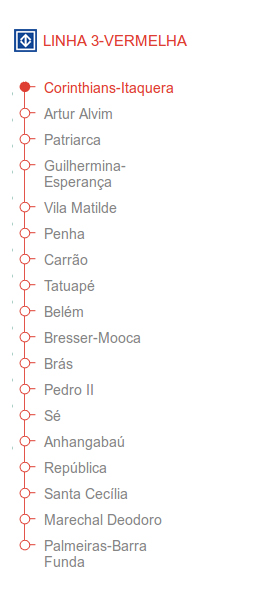
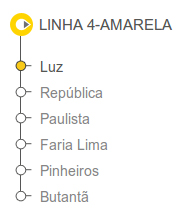

whom do we approach for carrying oversize luggage ( eg cycle box ) in sao paulo metro? do we write a mail or can we get an approval at the station.
thanks